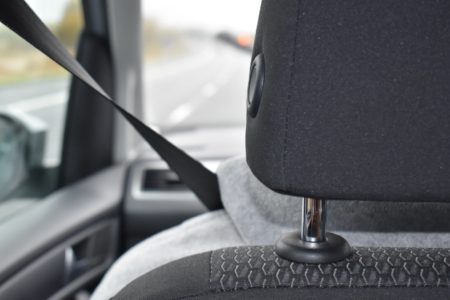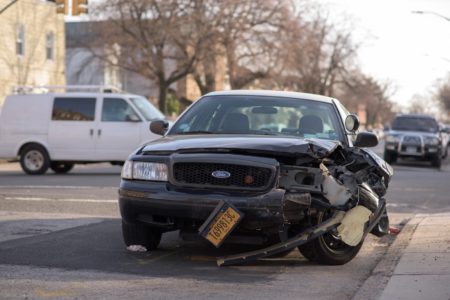How to Drive a Car | Checking Your Tires
Learning how to drive a car includes learning about checking tire pressure. A small leak in a tire gradually cause air to leak out. This will make your driving control unstable. Since this is a common occurrence when driving a car it is important to know check your tire pressure and to replenish it. Your learn to drive program should include this as an exercise. You can find more information on tire pressure in Driving Lesson 6 – N2K. Click the link below.
Learn to Drive: Driving Lesson 6 – N2K
You’ve got four tires and they hold up the car. That’s good enough, right?
Wrong! As you learn how to drive a car if you don’t look after your tires you’ll spend way more money on gas because you won’t go as far on each gallon (litre) you buy. You’ll also have to replace them sooner.
But that’s not all! Bald, under-inflated or over-inflated tires are dangerous when driving a car! They don’t hug the road the way they’re supposed to. They cause accidents, injuries and even – deaths.
At the very least tire-related accidents mean expensive repairs and skyrocketing insurance premiums – but you could also face criminal charges if your unsafe vehicle causes a crash!
And that’s sad when tires are so easy to maintain. Ten minutes a month is all it takes to inspect your tires and make sure they’re safe and performing they way they should. You don’t even have to get your hands dirty.
| Under-inflated tires contribute to 660 deaths and 33,000 injuries every year.(The National Highway Traffic Safety Administration (US)) |
If you knew that 10 minutes per month could save you $150 on gas and $2,500 in car repairs, wouldn’t you do it?
Be sure to practice checking your tire pressure. Make this as part of your Learn to Drive checklist. Look for more information in the Driving Lessons sections of the Workbook and the Video Library.
Maintaining Your Tires is Important as You Learn How to Drive a Car:
There are 4 things to be on top of – to keep your tires healthy:
Pressure – When it comes to tire pressure, think “Goldilocks.” Not too much. Not too little. Just right!
Alignment – Periodically, tires (wheels) get bumped and jolted and they need to be re-aligned.
Rotation – This is like musical chairs for tires. Tires wear differently in different spots so they need to be moved around regularly.
Tread – If you think “As long as I can see the pattern, my tires are okay,” you’re dead wrong!
Tire Pressure
| What should the pressure in your tires be?You’ll find the recommended tire pressure in your Owner’s Manual, on the driver’s side doorjamb, on the glove box door or inside the fuel door of your car. |
Some tires look flat but are okay. Others look okay but they’re under- inflated. It’s impossible to eyeball your tires accurately so you need to get a tire gauge. They only cost a few bucks and can save you a bundle because you’ll get much better mileage from every gallon of gas you buy. (Some gas stations still have tire gauges you can use but they’re often faulty.)
Checking your tire pressure is easy. It only takes a few minutes. You’ll need a tire gauge.
How to Use a Tire Gauge
A tire gauge is metal and looks a little like something the dentist might put in your mouth. One end is rounded and fits onto the tire’s valve. The other end has a scale in it that shoots out when you press the gauge onto the tire valve. That scale gives you the tire pressure reading.
1. Remove the cap from the tire valve.
2. Fit the rounded end of the gauge firmly onto the valve.
3. Read the tire pressure on the scale at the other end of the gauge.
4. Repeat until you get the same reading 3 times in a row.
5. Compare the reading with the recommended tire pressure for your vehicle. If your tire pressure is too high, let a little air out. If it’s too low, add some air at the closest gas station with an air pump. (If you aren’t sure how to do this, ask a parent or the station attendant to help you.)
6. Replace the cap on the valve.
Visual Inspection
The sides of tires are not as strong as the surface that contacts the road, so it’s important to inspect them each month when you check your tire pressure.
Look for nicks, cracks, tears and bulges. If you see any of these things, have the tires inspected right away by a professional. The damaged tire might need to be replaced.
Tire Alignment
| Check your Owner’s Manual for Alignment recommendations. |
Remember that curb you accidentally smacked into? Or the pothole that jolted you on the highway? Any big bump can alter the alignment of your tires. If you want a smooth ride and maximum wear from your tires, you’ll need to have them aligned periodically too.
Tire Rotation
| Check your Owner’s Manual for how often to rotate your tires. It will recommend a pattern for where they should go too.(Rule of Thumb is every 5,000 miles.) |
Each of your tires carries a different weight so it’s important to switch them around periodically. Sounds silly, doesn’t it? But the fact is that tires are expensive and rotating them will make them last longer.
Your tire dealer can do this for you (Yes – there’s a fee but it’s a lot less than new tires!)
You should have them balanced at the same time.
Tire Tread
The tread on your tires is the part that grips the road. Contrary to popular belief, worn out tires don’t look bald (smooth). You can still see the pattern, but it’s not deep enough to provide the traction you need.
Many tires have tread bars. They’re little rubber bits that stick up in the tire. (They look like bits that should be removed, but they have an important purpose.) If the tread bars are even with the tread on your tires, you need new tires
| If you don’t have tread bars, it’s hard to eyeball tread depth so you need another tool – a US Lincoln-head penny.Hold the penny so Lincoln’s head is up. Insert the penny into the tread on your tire and press it as far in as it will go. Now look closely. If you can see all of Lincoln’s head, your tire needs to be replaced. Try this again in several places. You should see the same amount of the president’s head each time. If it varies, your tires are wearing unevenly which may mean you need an alignment. Have it checked by your local garage or tire seller |
Learn Common Tire Problems and Solutions When You Learn to Drive
| SYMPTOM | POSSIBLE PROBLEM | WHAT TO DO |
| Steering wheel pulls to one side or shakes when driving under 30 mph | Misaligned front wheels | Take to tire dealer or repair garage ASAP |
| Steering wheel vibrates when driving over 50 mph | Unbalanced Front Tire | Take to tire dealer or repair garage ASAP |
| Vibration in the car when driving over 50 mph | Unbalanced Rear Wheel | Take to tire dealer or repair garage ASAP |





